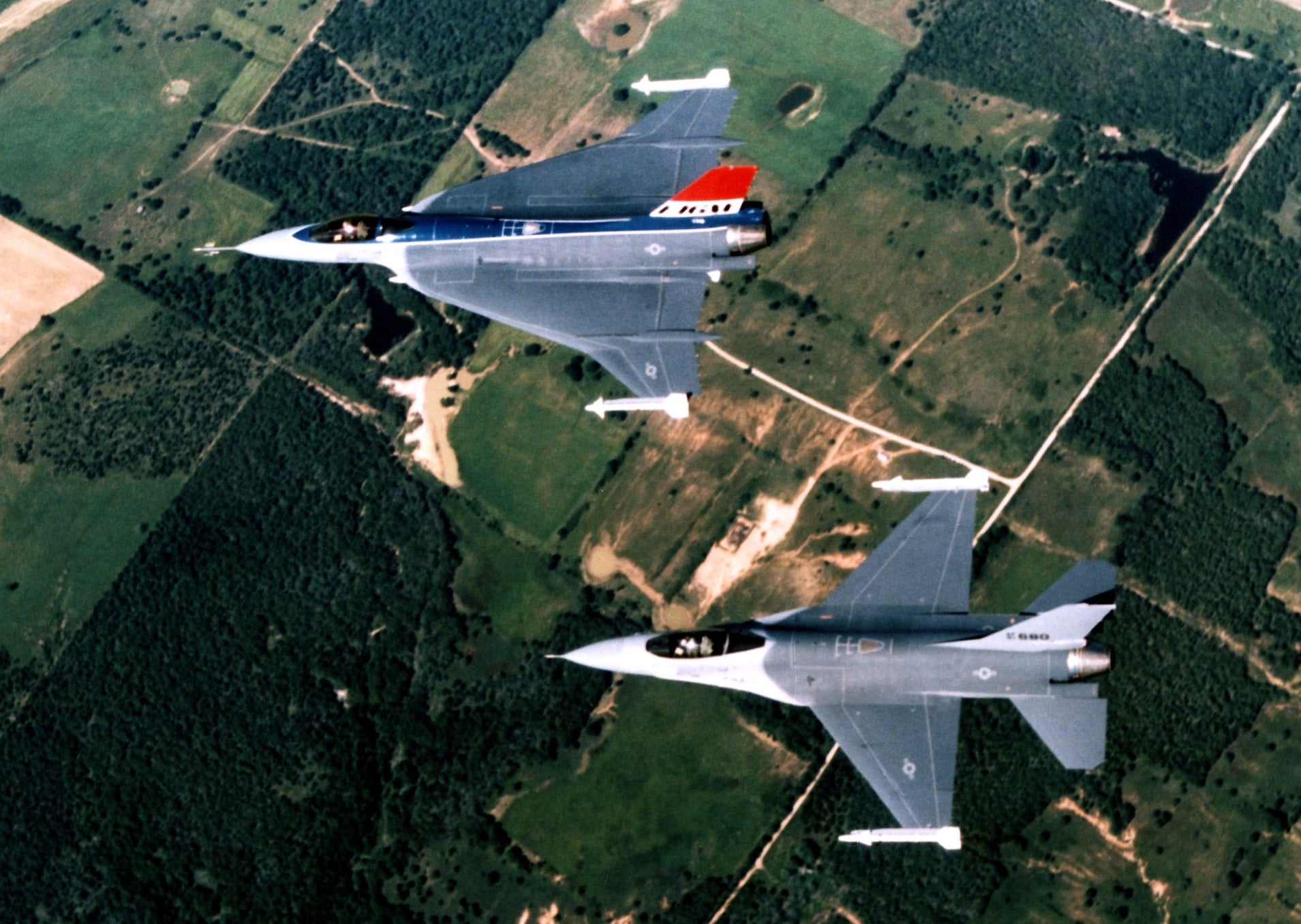The F-16XL Was A Bigger, Better F-16 That Was Improved But Not Approved
General Dynamics (GD) entered one of their designs in the Enhanced Tactical Fighter (ETF) competition to replace the F-111 but lost out to what became the McDonnell Douglas F-15E Strike Eagle. Of course, the United States Air Force (USAF) still operates hundreds of F-15Es and numerous General Dynamics F-16 Fighting Falcons (also known as Vipers) today.
The design that GD submitted to the ETF competition is one of the most easily recognizable prototype aircraft ever built. Only two were created, initially using production F-16A numbers 3 and 5. Those airframes were transformed into the world’s only two F-16XL.

Cranking the Arrow for SCAMP
But the F-16XL actually began as the F-16 Supersonic Cruise and Maneuver Prototype (SCAMP). Originally intended to demonstrate that supersonic transport (SST) aerodynamics had potential applications in military aircraft, the research spanned two years but was largely theoretical and model-based. It was found that a cranked-arrow wing shape would provide vastly increased lift without the usual limitations of a delta wing when paired with an F-16A fuselage. GD invested heavily in research and development, partnering with NASA to test more than 150 different configurations for 3,600 hours in wind tunnels at NASA Langley.

That Magical Wing
The most distinctive feature of the F-16XL was its cranked-arrow delta wing. The wing was swept back at a lower angle (50 degrees) near the root (for supersonic performance) and at a higher angle (70 degrees) outboard (for subsonic stability and handling). The surface area of the wings, 633 square feet, was more than double the wing surface area of a standard F-16A, but drag was reduced. As one result, the aft-mounted ventral fins on standard F-16As were absent on the F-16XL.

More Than Just a Bigger Set of Wings
GD and the USAF agreed to utilize the third full-scale development (FSD) F-16A airframe (A-3, serial 75-0747) and the fifth FSD airframe (A-5, serial 75-0749) for the F-16XL conversion. Modifications included the cranked-arrow wings and the addition of two fuselage sections, one forward and one aft, totaling 56 inches. The wing skins were 600 pounds lighter thanks to carbon fiber construction, but the aircraft weighed almost 3,000 pounds more than the standard F-16A. The wing contained fuel, allowing both an 82 percent increase in internal fuel capacity and the ability to attach up to 27 stores stations.

So That’s Why 0747 is a Two-Seater
The first F-16XL to fly was 75-0749. Powered by a Pratt & Whitney F100-PW-200 turbofan, she flew for the first time on 3 July 1982. 75-0747, powered by a substantially more powerful General Electric F110-GE-100 turbofan, was badly damaged in a mishap before conversion. Rather than modify another airframe, 0747 received a new-build F-16B type two-seat forward fuselage at GD in Fort Worth. 0747 flew for the first time on 29 October 1982.

